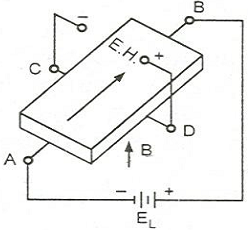Explain the terms: valence band, conduction band, valence electrons, and energy gap with the help of suitable diagrams.
Valence Electrons: The electrons in the outermost orbit are termed as valence electrons, because these electrons are fixed into the outer orbit along with the neighbouring atom in a crystal. Such electrons being far away from nucleus possess least binding energy and they are easily influenced by external influences. An extremely little energy is needed to free them by their parent atoms. While the valence electrons of an atom are less than four, the material is generally a metal or a conductor. While the number of electrons in the outermost orbit is more than four, the material is generally an insulator. While the number of valence electrons in an atom is accurately four, the material is a semi-conductor.
Conduction Band: This shows a larger group of permissible energy levels. The orbits into the conduction band are extremely large and an electron in that band experiences almost negligible nucleus attraction. Actually an electron in the conduction band does not belong to any specific atom and this move randomly during the solid. Therefore these electrons in the conduction band are termed as free electrons. When any material has empty conduction band, therefore no conduction band is possible.

Valence Band: This represents the range of energies possessed through the valence electrons which is the electrons in the outermost orbit. Such band has the electrons having the highest energy and this can be completely or partially filled. While this band is filled, this means that the electrons involving all permissible energy levels in the band and no electrons can move in a filled band. Therefore an electron in a fully filled band cannot contribute to electric current. This partially filled band can accommodate more electrons.
Energy Gap: The minimum amount of energy which is needed to lift an electron from a valence band to the conduction band is termed as energy gap, and is illustrated by the separation among these two bands, that is valence and conduction bands. Such gap is also termed as forbidden energy gap. This also indicates the bondage of valence electrons to the atom. It means if the energy gap is more, then the valence electrons are strongly bound to the nucleus. That energy gap finds the conductivity of a material.